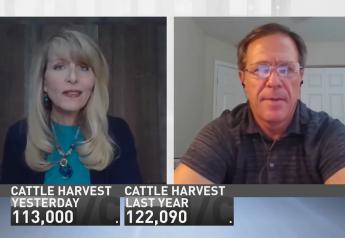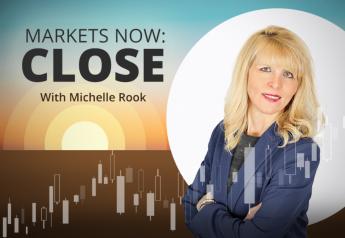History Could Repeat Itself with Record Cattle Prices in 2024
U.S. Farm Report 02/03/24 - Farm Journal Report
One of the worst droughts in U.S. history is still being felt by the nation’s cattle producers. USDA says the U.S. cattle herd now stands at only 87.2 million head a 73 year low and the cow herd is the smallest since 1961.
Dr. Derrell Peel, Extension Livestock Marketing Specialist, Oklahoma State University, says. "If you take heifer slaughter, plus cow slaughter for the last two years, 2022 and 2023, over 51% of all the cattle we slaughtered in this country were females and that had not happened since 1986."
And Don Close, Chief Research and Analytics Officer, with Terrain says that makes this cycle different than 2014 -15 and more like 2011-12, just because female liquidation is still taking place.
, "We haven’t even started the rebuilding yet, we’re still in the liquidation phase and it's not unrealistic to think that we could continue to be in that net liquidation through 2024."
And he adds there’s no sign of herd rebuilding yet, due to the lack of heifer retention. "We came up with the recent January cattle on feed report that heifers as a percentage on feed was the fourth largest, we've seen in modern history."
David Trowbridge, Gregory Feedlot, says he’s seeing the same trend at his Tabor, Iowa feedlot. "I’ve actually seen kind of the number of replacement heifers' retention for our customers that have some marketings from selling replacement heifers has actually gone down a little bit."
That’s partially because many producers are still trying to heal.
Todd Wilkinson, president, National Cattlemen’s Beef Association explains, "I will tell you that when we looked at keeping more heifers back this year, what I could sell most heifers and I didn't keep as many heifers back because putting a little equity back in our operation kind of helps."
Aging operators and the high cost to borrow money are also a deterrent.
Marshall Hansen, Sr. Vice President with Farm Credit Services of America says, "Higher interest rates are certainty impacting that as well. We have higher costs."
And Mother Nature also plays a role according to Colin Woodall, CEO, National Cattlemen’s Beef Association. "I think most producers are being a little bit more cautious this time around to make sure that forecast is favorable for their area."
But the outlook isn’t just positive for supply but also demand in 2024 according to Dave Weaber with Terrain.
Dave Weaber, Sr. Animal Protein Analyst, Terrain, says, "Consumer expenditures have been terrific through the back half of 2023 and all the ground that beef has made up in the back half 2023 took it out of the chicken business."
He says it’s tied to taste and since COVID, more consumers are preparing high cut of beef at home verses the restaurant.
Weaber says, "And I think it’s a testament to the quality that consumers perceive out of our product."
He says the improving economy and stock market also serve as a tailwind.
International demand for U.S. beef was down slightly in 2023 with higher prices but the U.S. Meat Export Federation is expecting a rebound in 2024.
Randy Spronk, Chair, of the U.S. Meat Export Federation says, "The predictions that we’ve got here are that it could be up over 5% and could be over $10 billion."
That’s tied to demand for variety meats and the promotion of other value cuts in countries like Taiwan, Korea, Mexico.
So, what does all this mean for prices in 2024? CattleFax releasing their projections at CattleCon 2024 including record fed cattle prices.
Kevin Good, CattleFax analyst says, "You know fed prices you know we look at them this past year in 2023 we averaged $175. We’re suggesting we’ll average $184-$185 this year. So, about a dime higher."
Good says feeders will also hit new highs. "On the feeder cattle we would suggest $240 to $250 on an eight weight is where we’ll end up this year. So, substantially higher than last year."
While the higher replacement costs will keep break evens for the feedlots tight, it’s being offset by lower corn prices.
David Trowbridge says, "They help the cattle feeder immensely from $7 corn to $4.50 corn. It’s taken costs of gain down from a dollar teens to close to a dollar a dollar somewhere in there."
And the good news is this market cycle may have a longer tail with tighter numbers and ample slaughter capacity at packing plants.
Good says, "If you remember back to 2010 and 2015, we lost quite a few packing plants, right now we’re starting to build more packing plants so the leverage component will continue to favor the cattle producer longer in this cycle."
Close says, "I think we’re still looking at late 2026 at the earliest before we see any potential for increased beef production."
Peel adds, "So the peak prices probably don't happen. Before late 2025 maybe added 20 points, or possibly even beyond that."
Add to that a calf crop that’s the smallest in 82 years, and there’s good days ahead for cattle producers.
Wilkinson agrees, "I am more optimistic for 2024 25 and 26 than I have been in anytime and in my involvement in the beef industry, because they've got to come to us. We're in the driver's seat."







